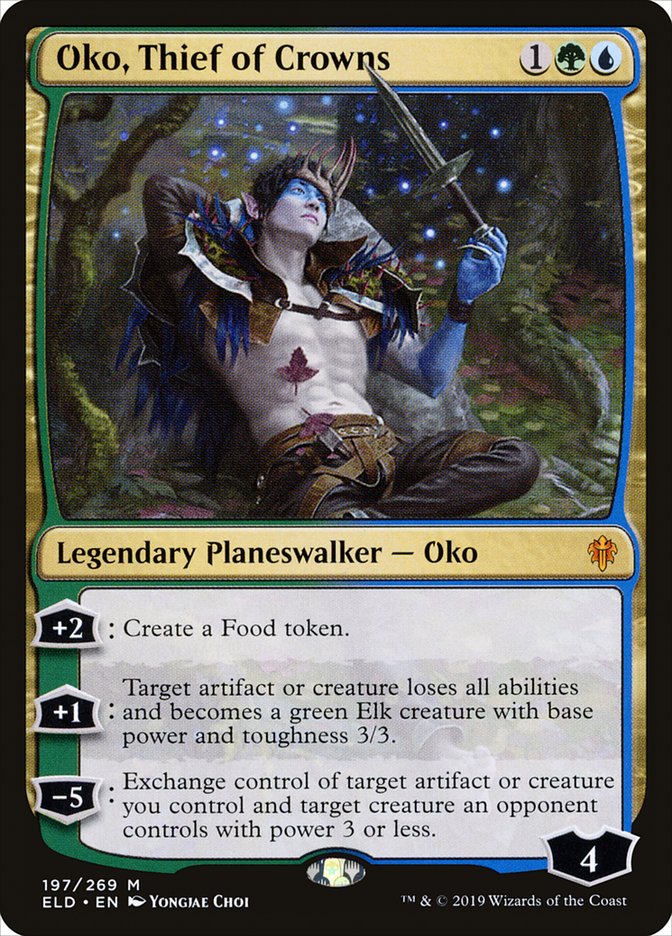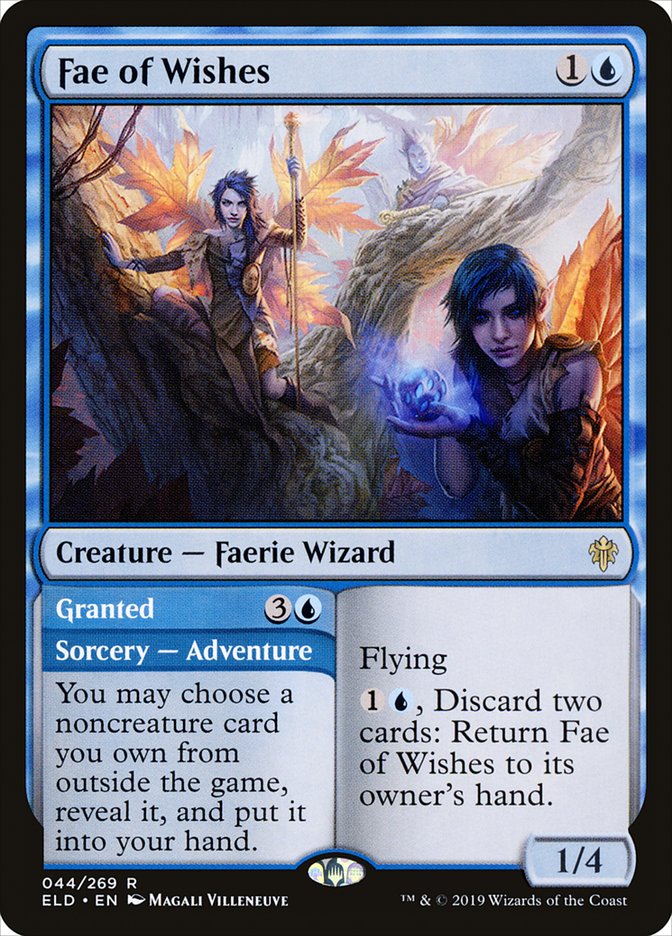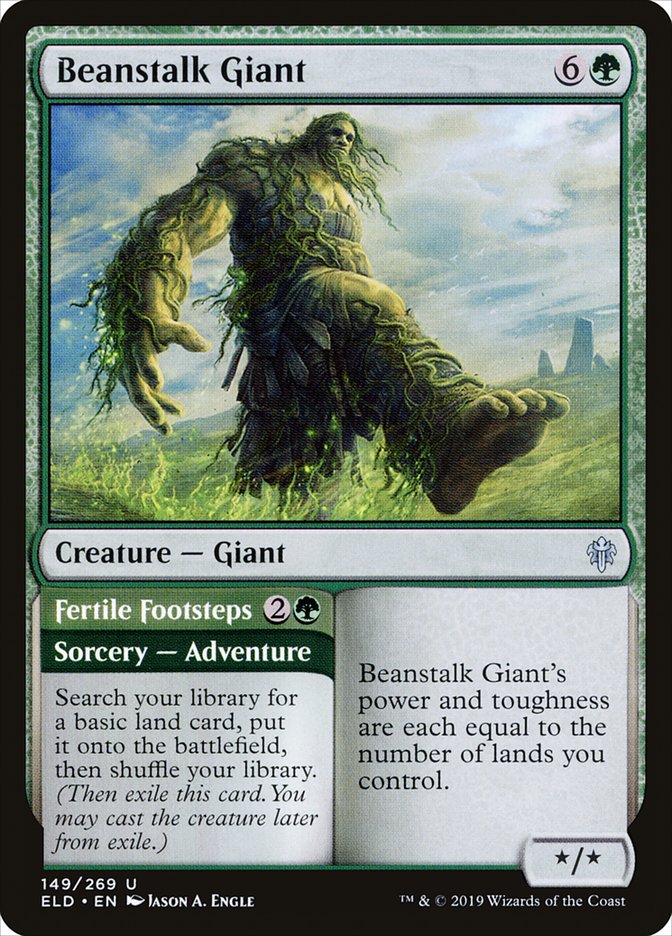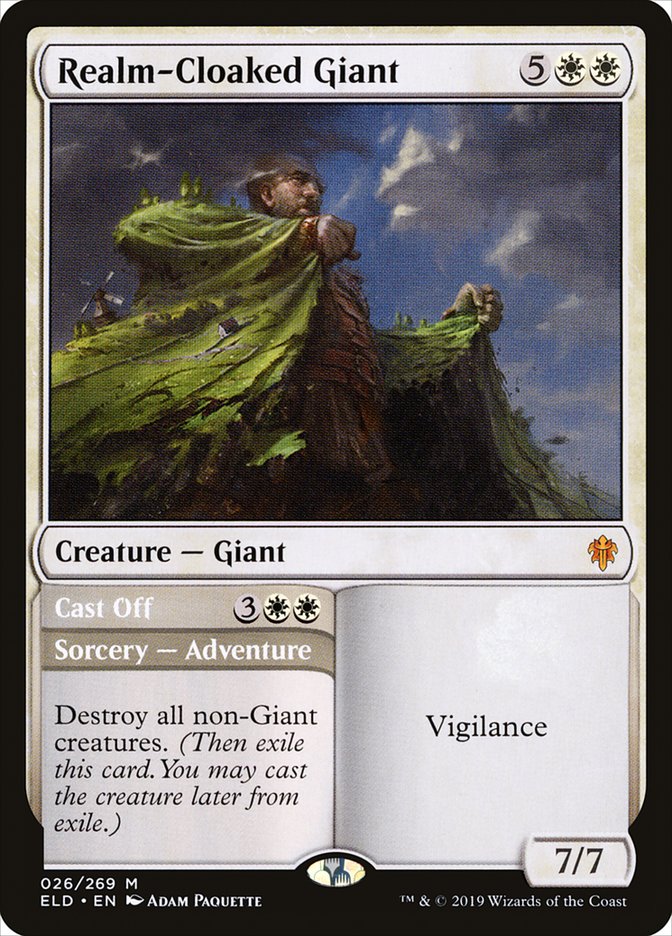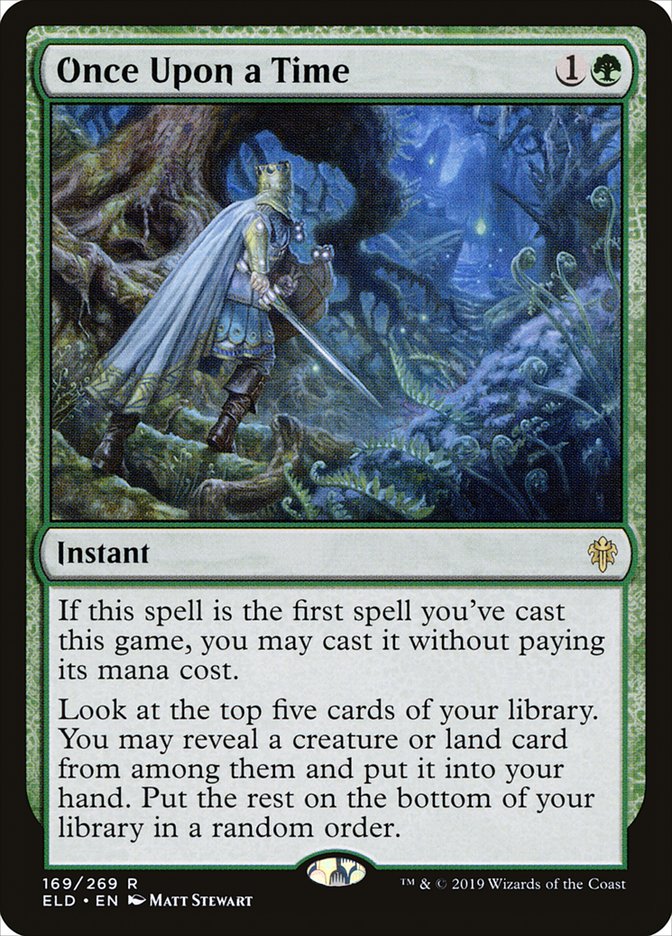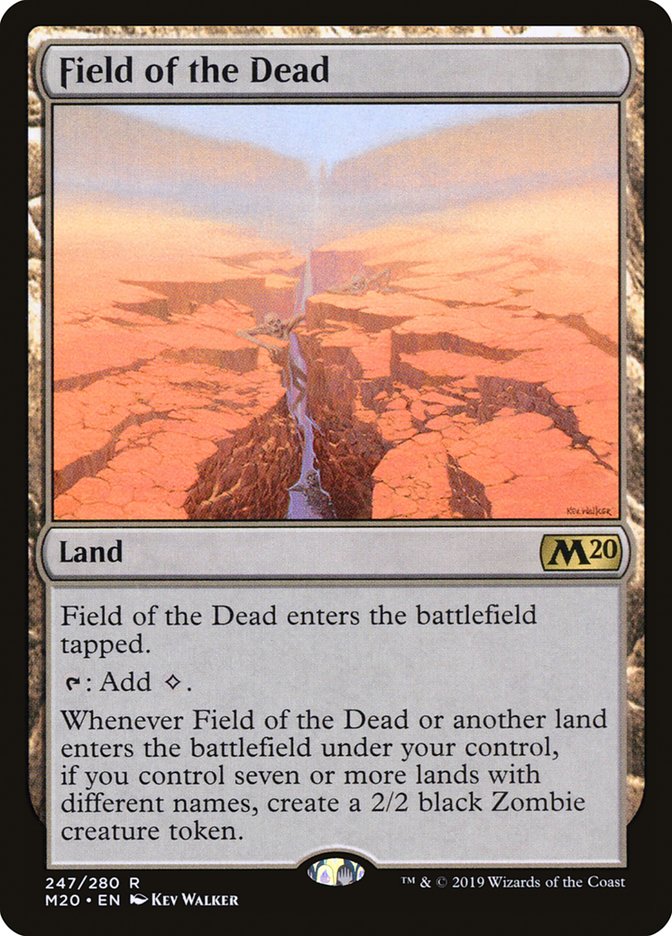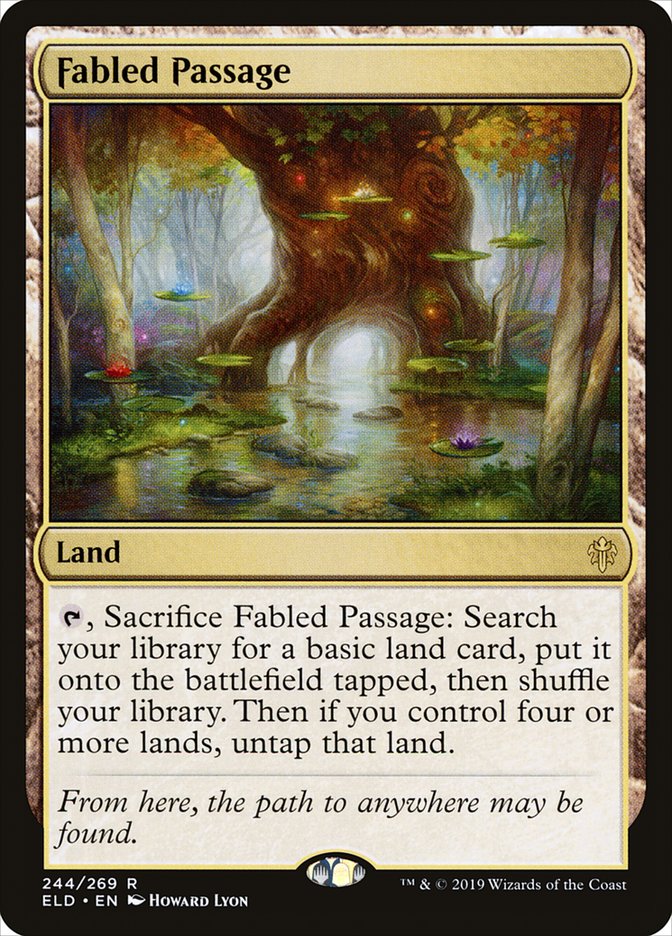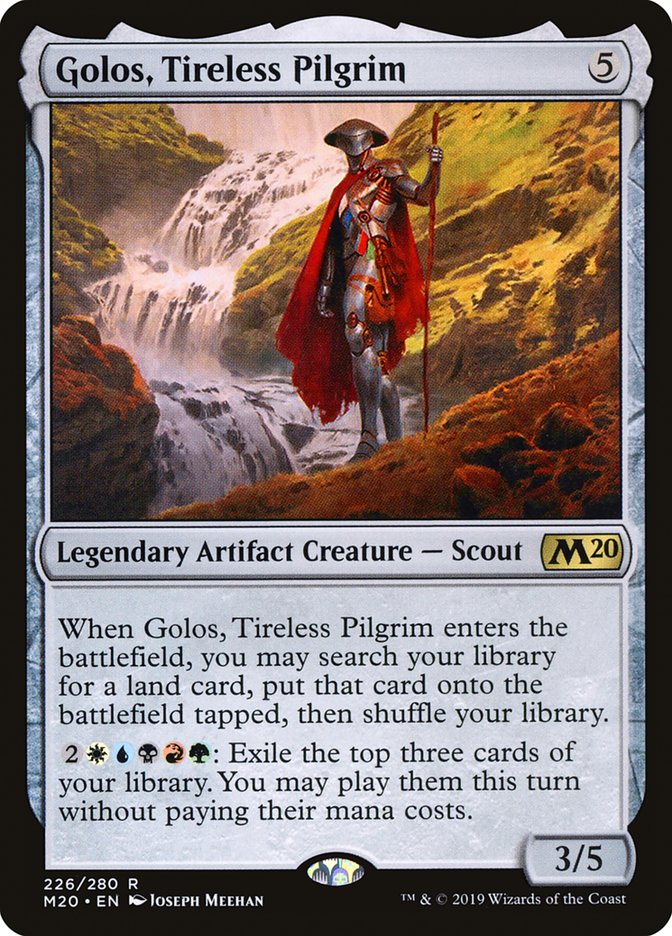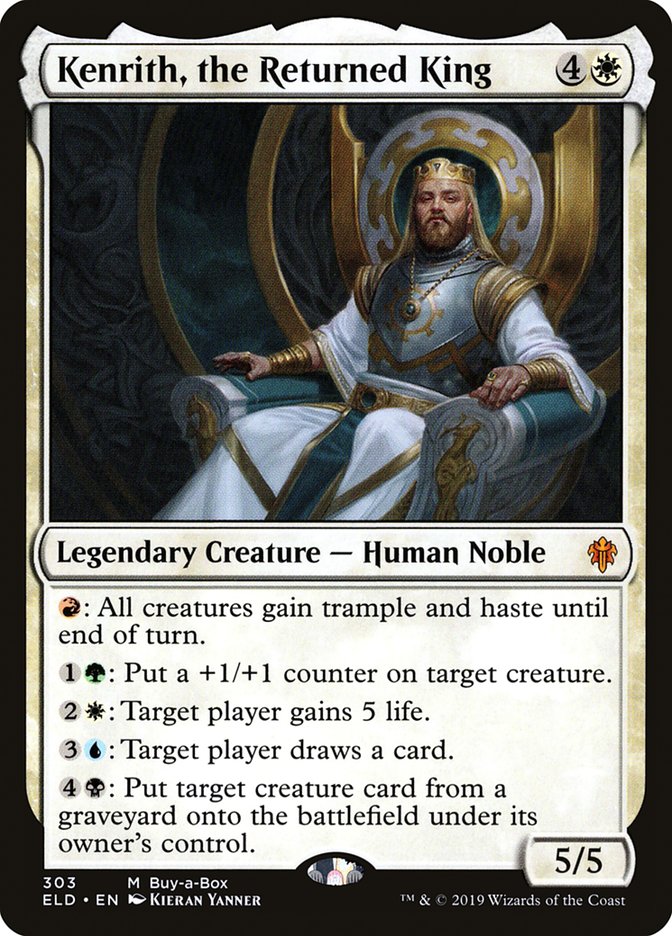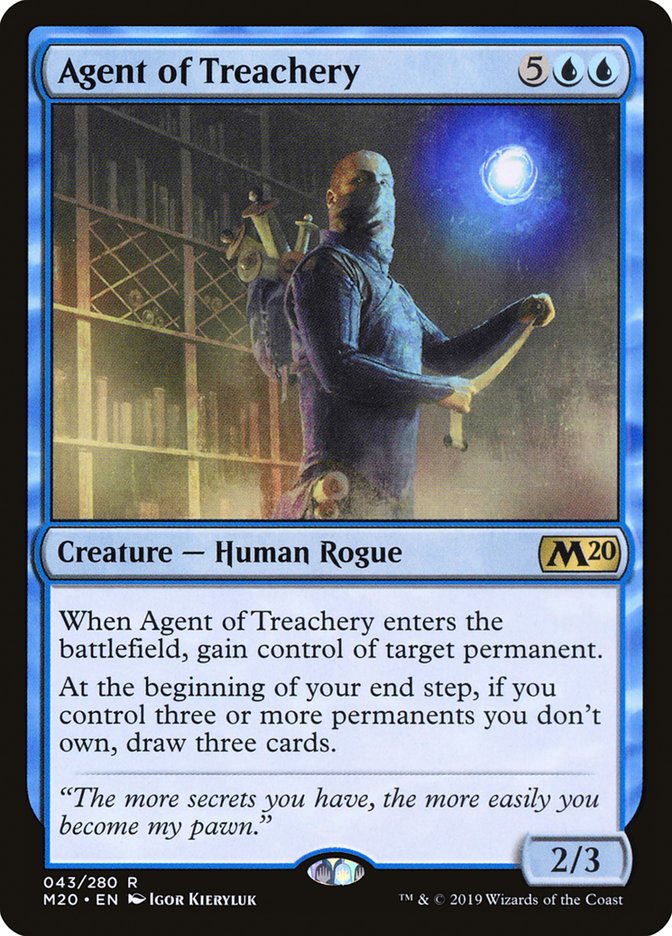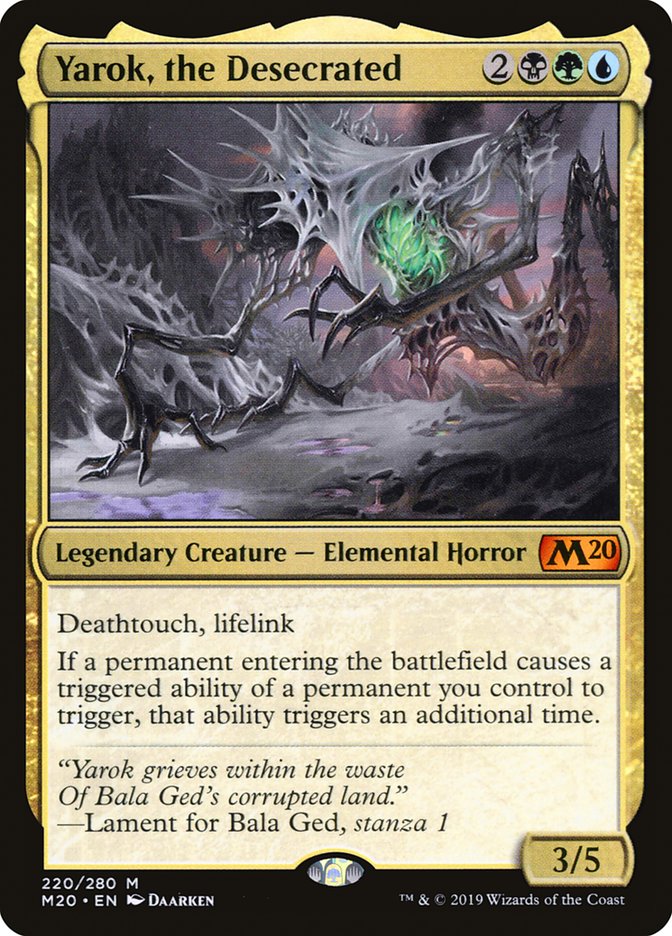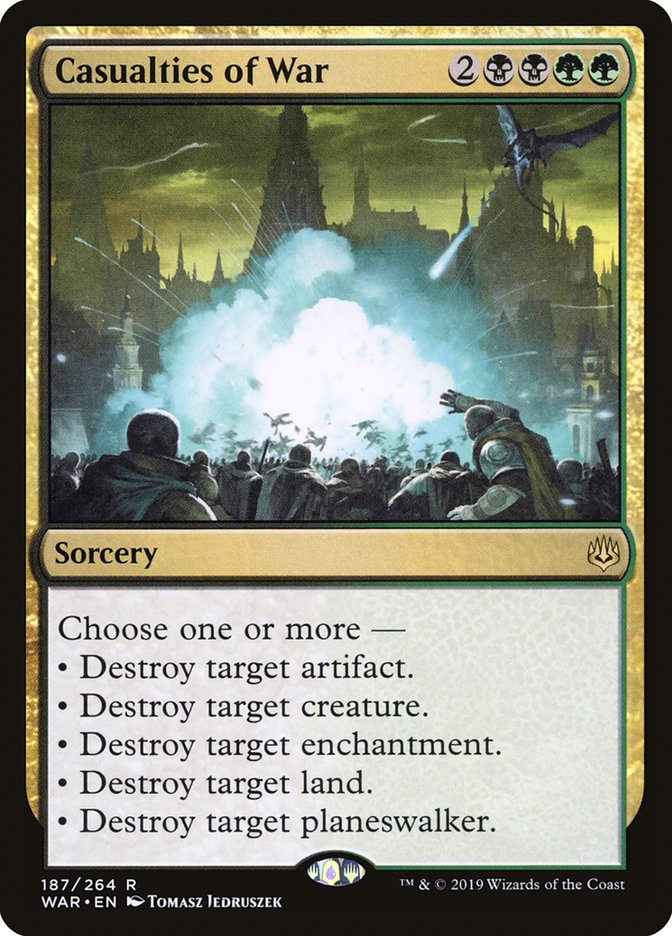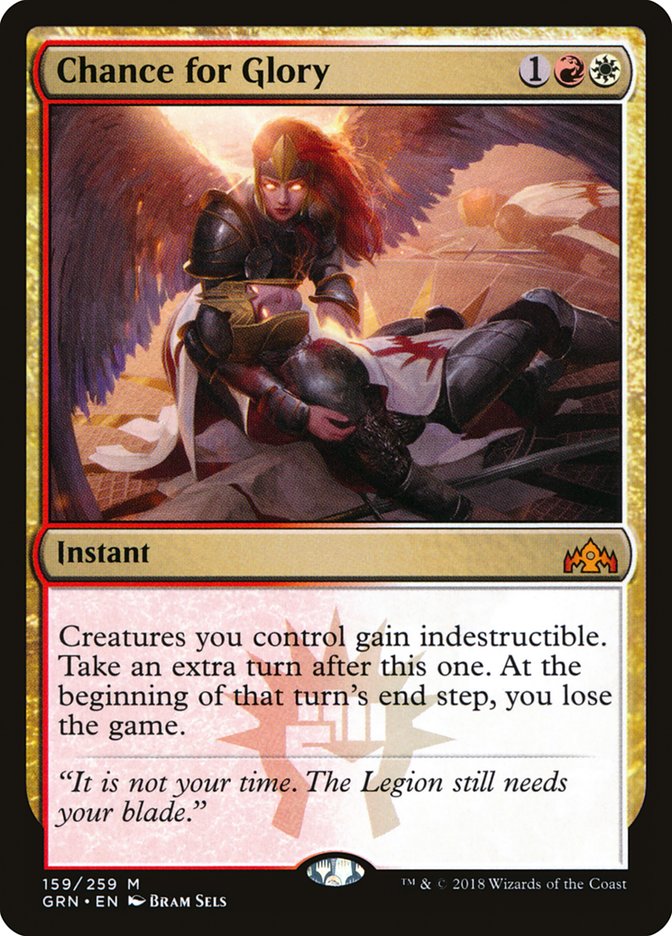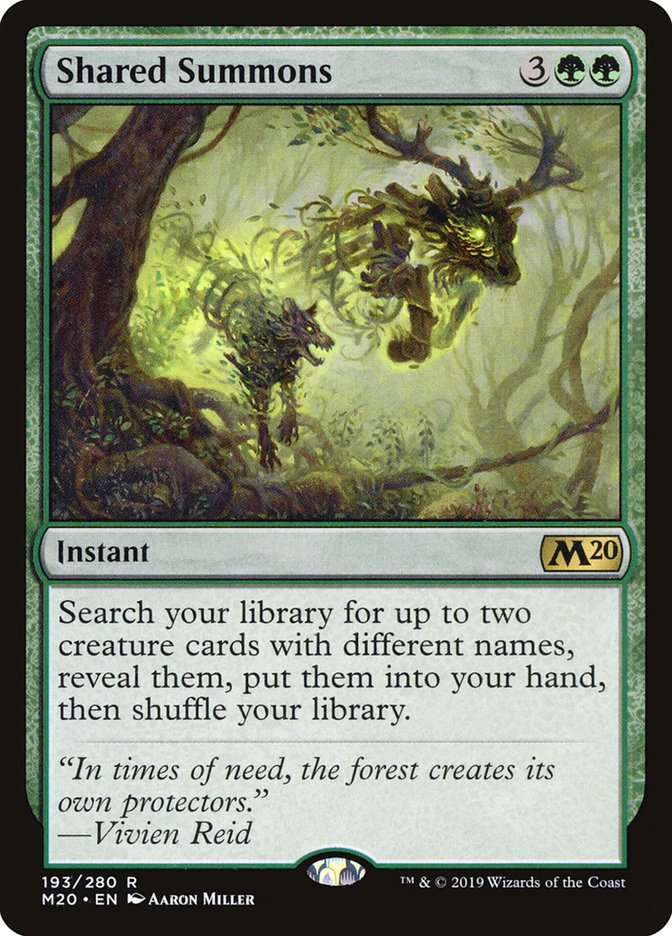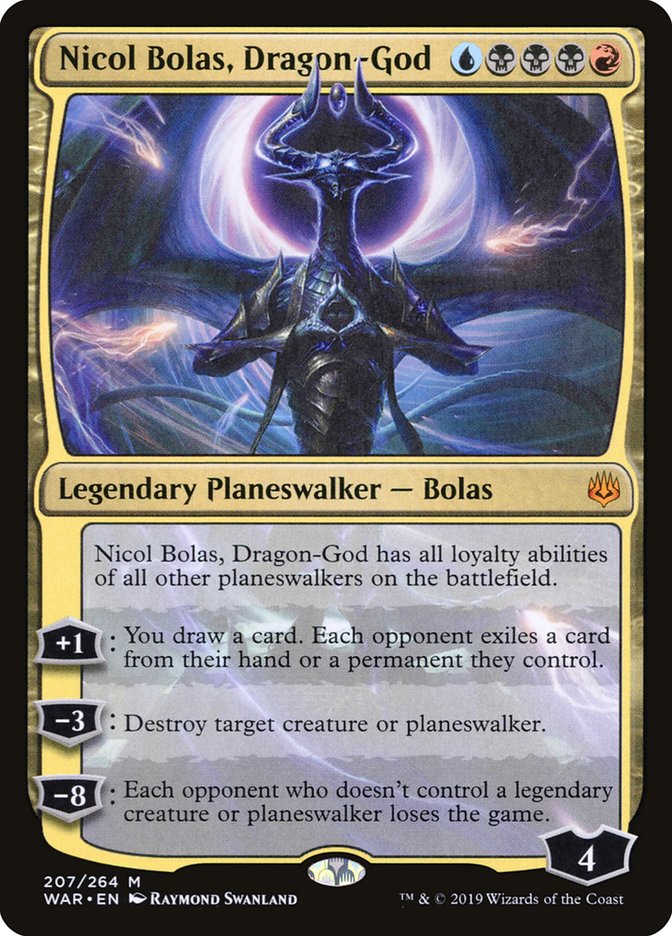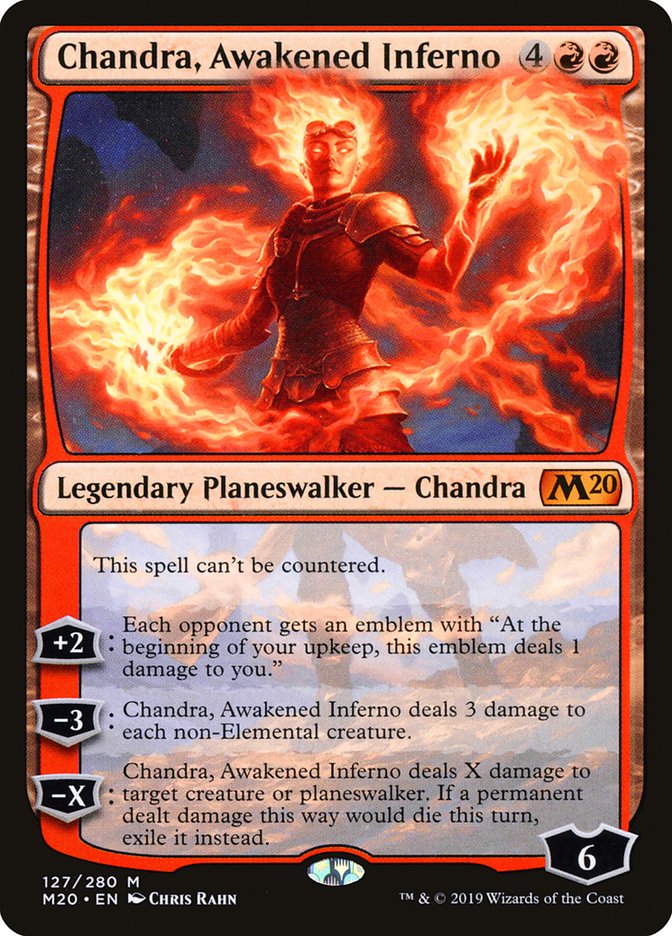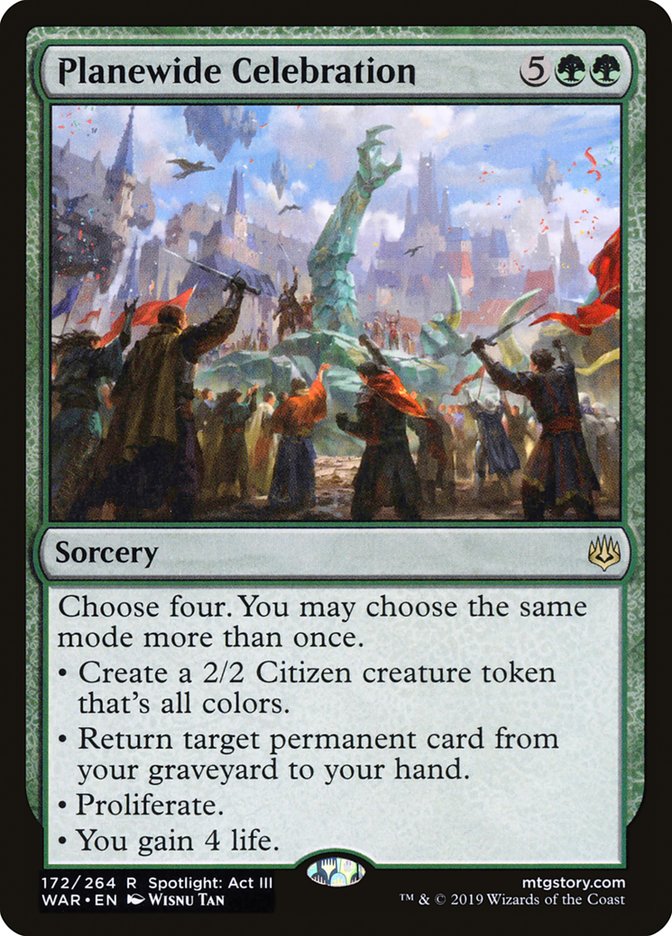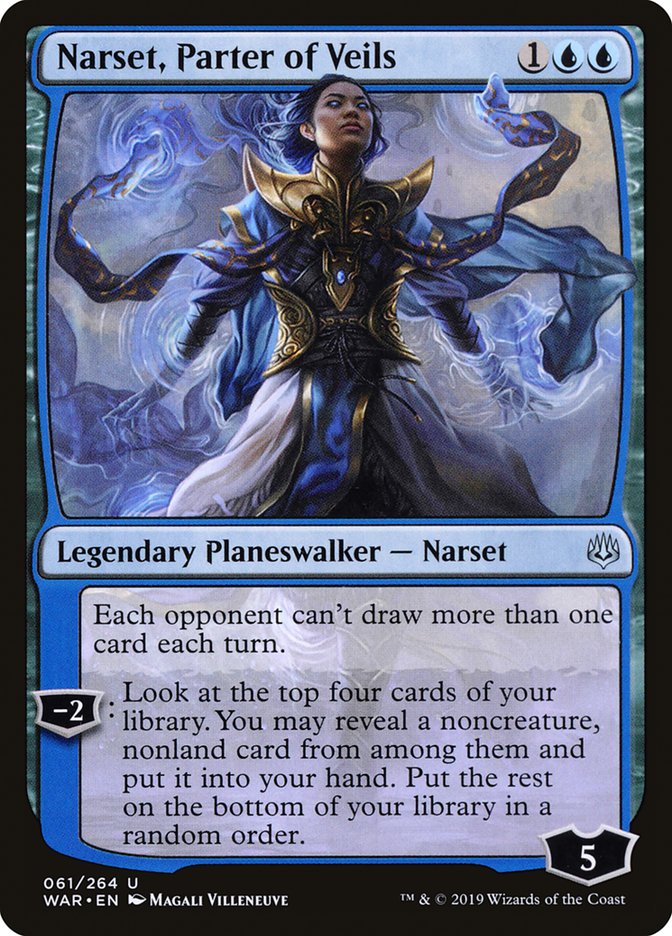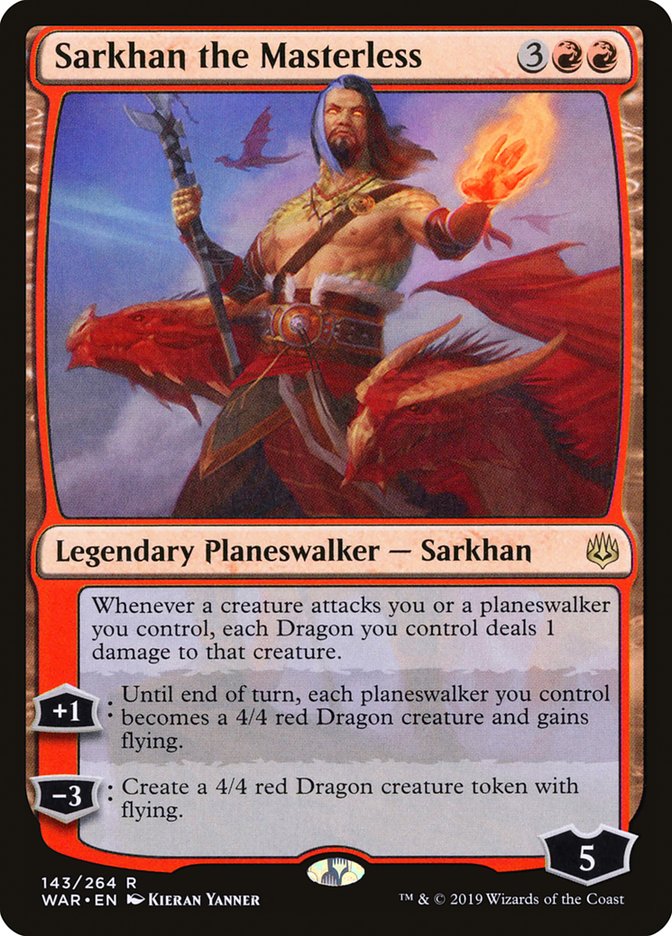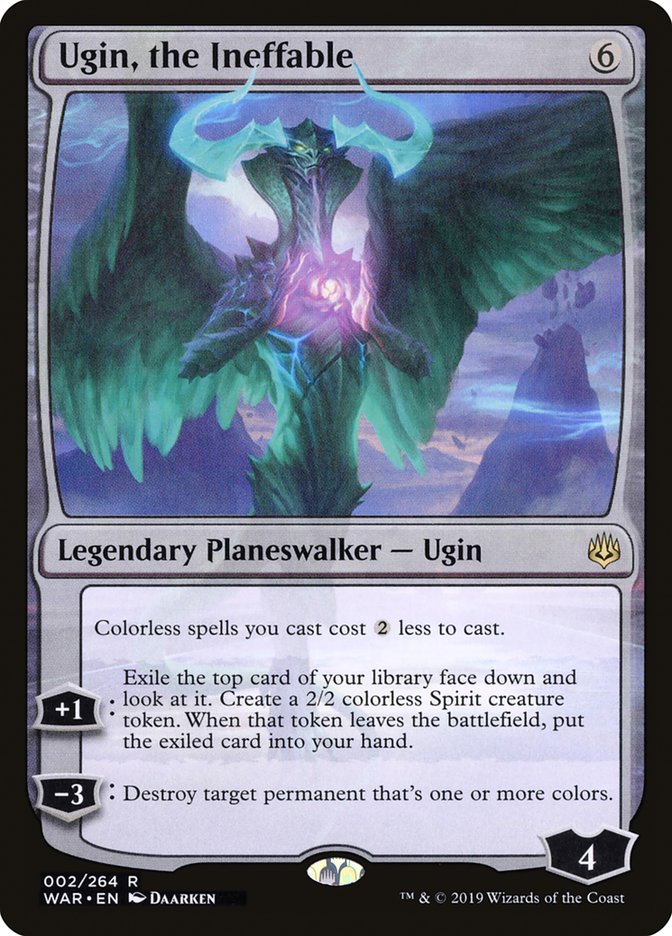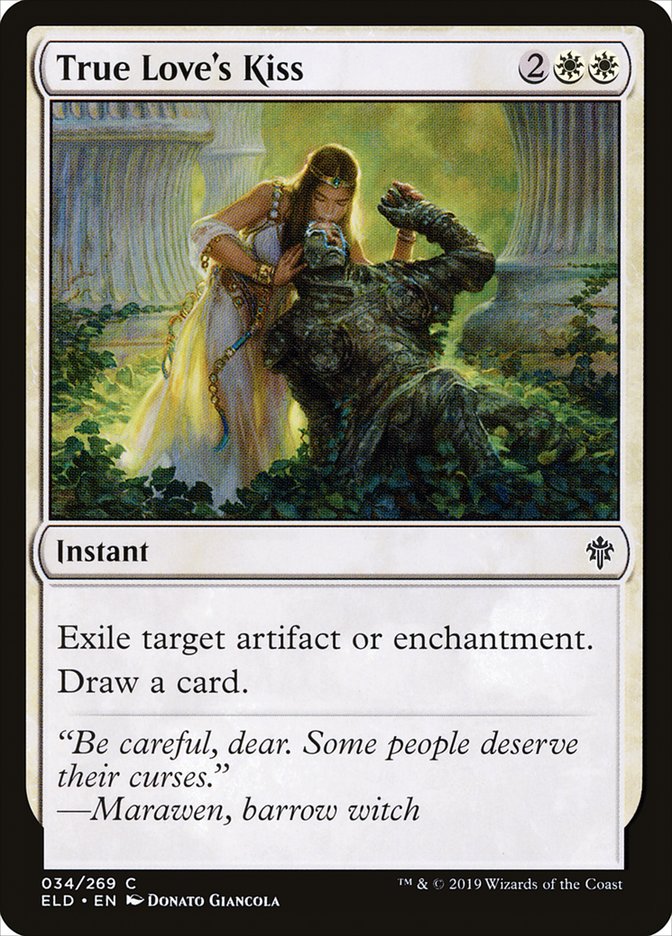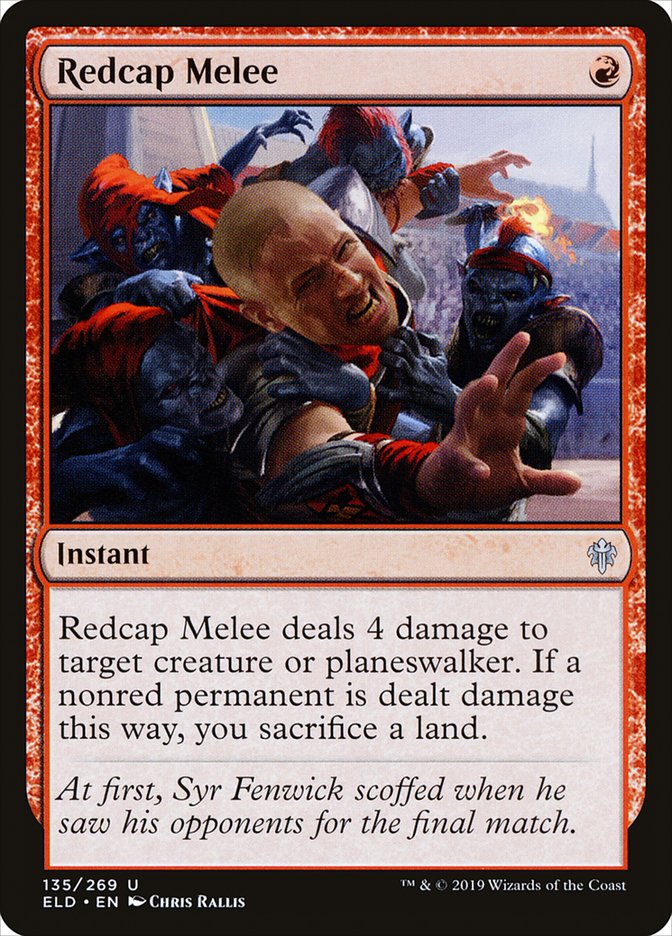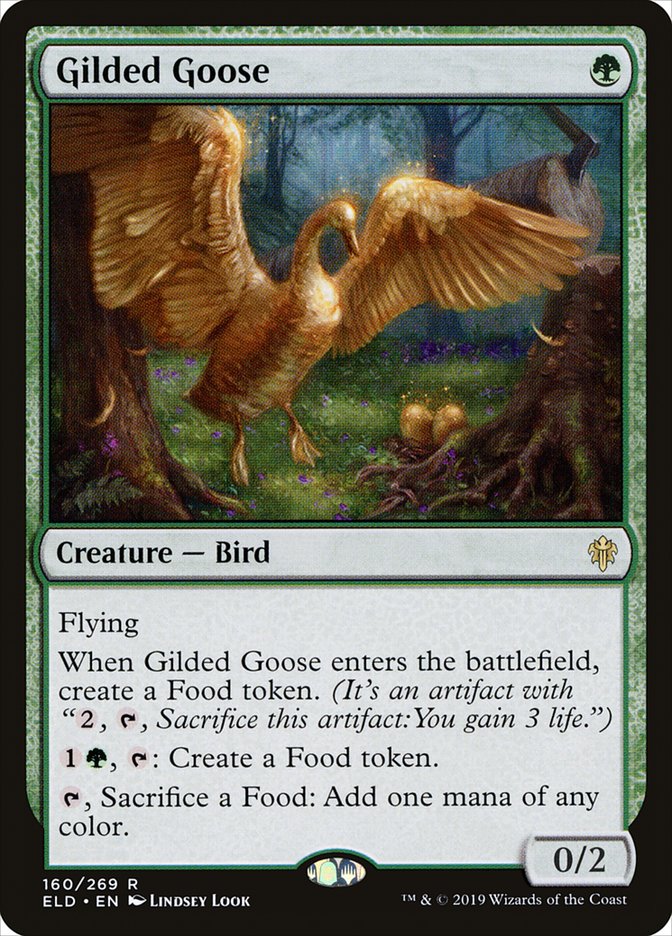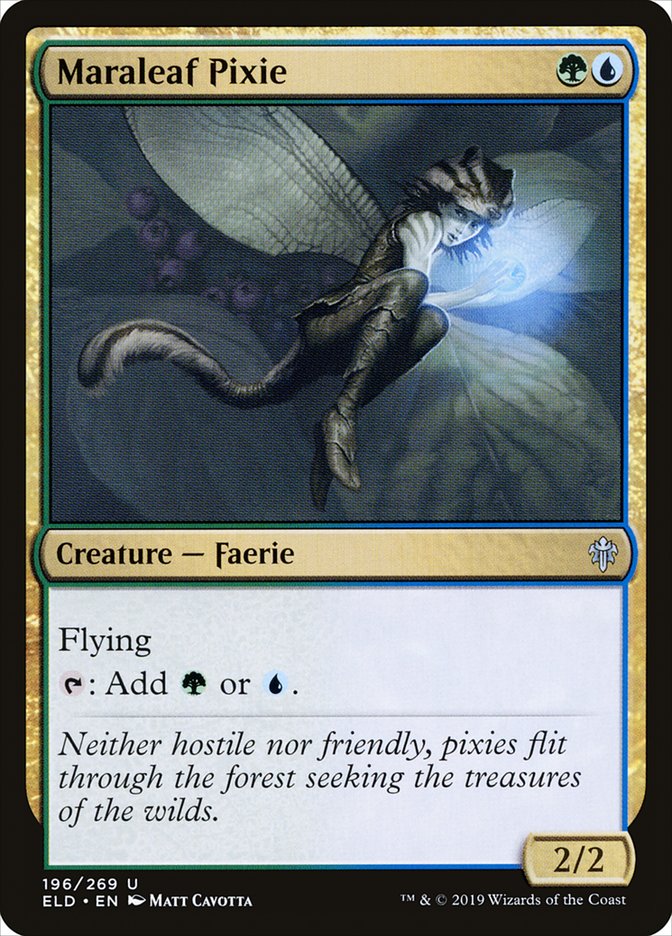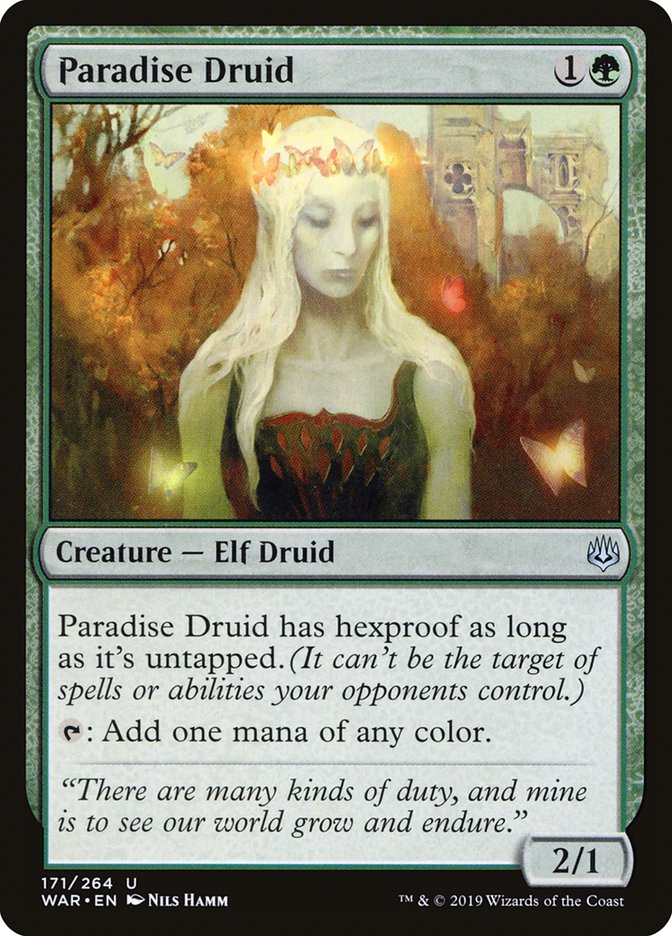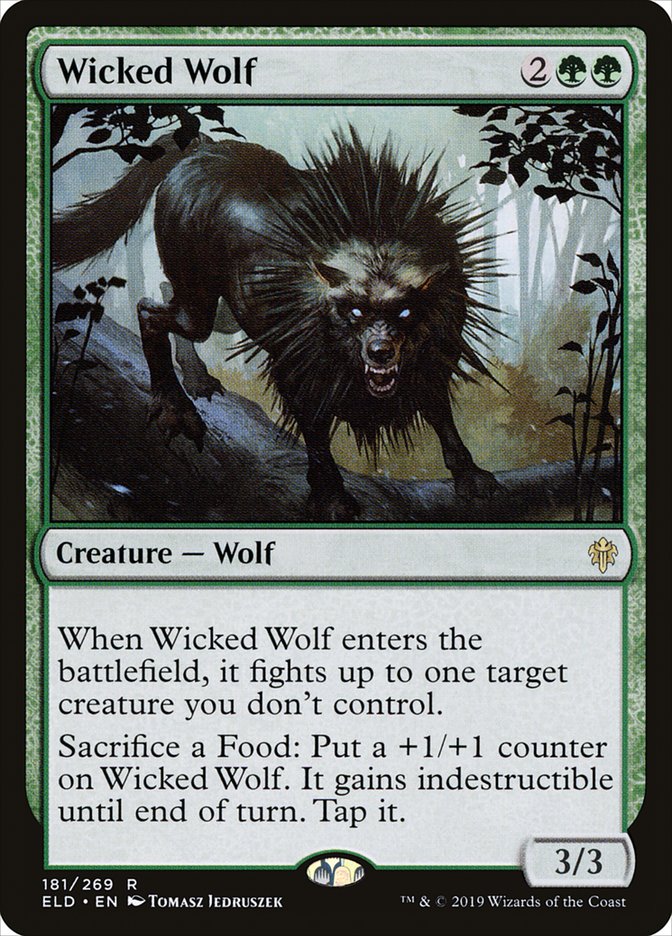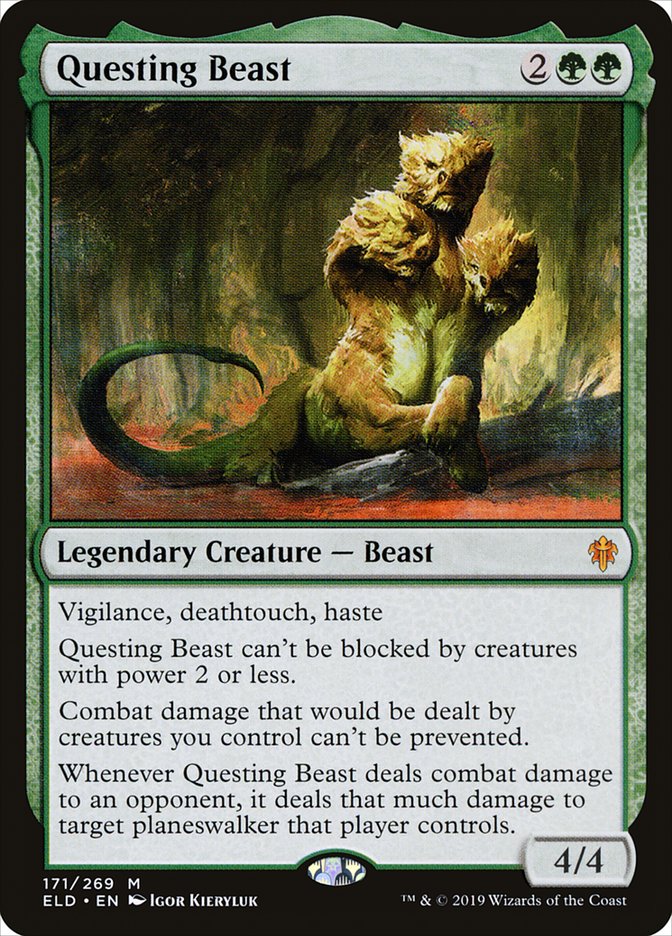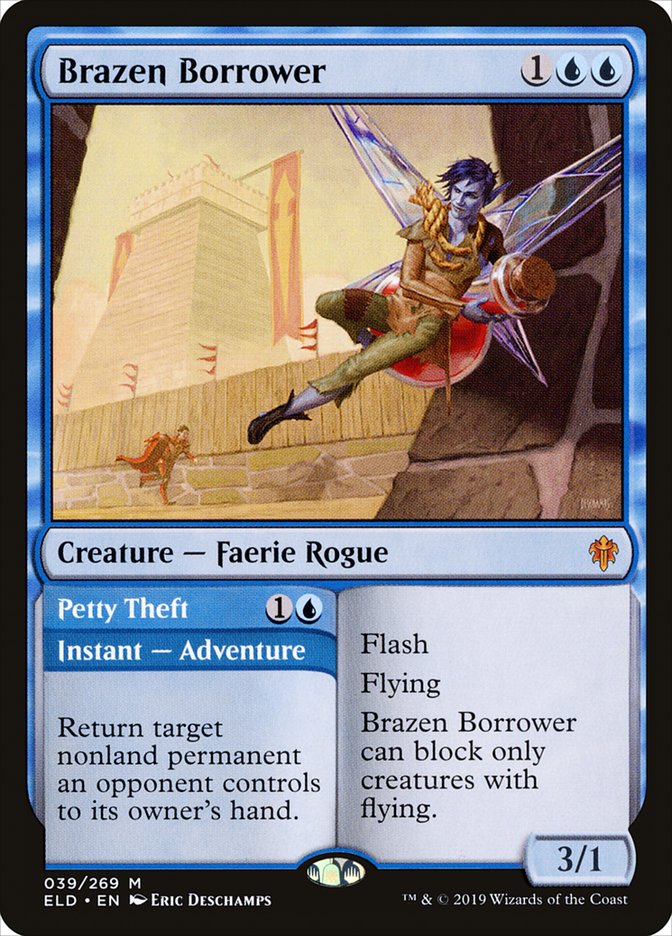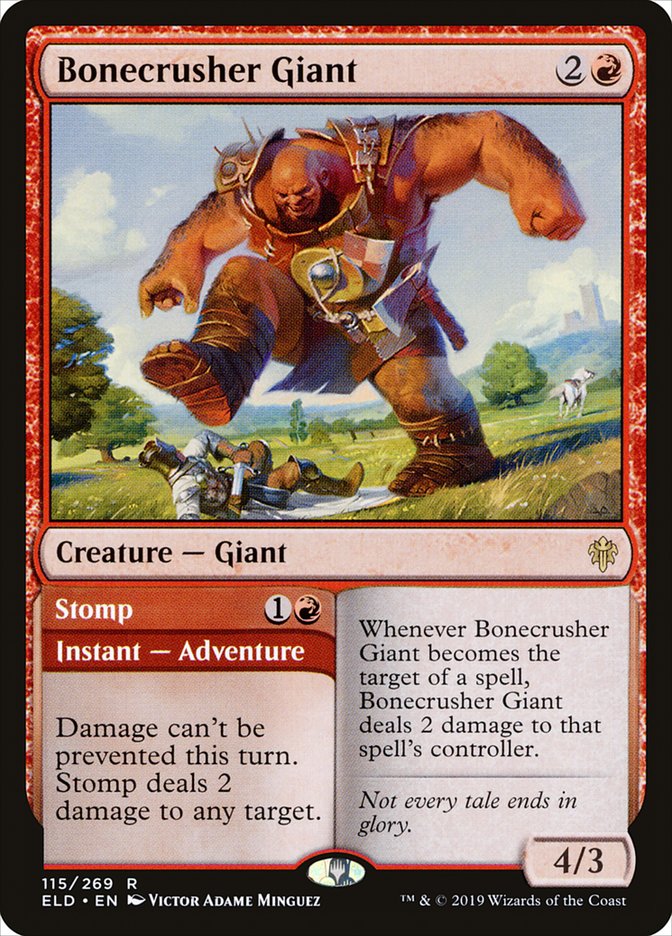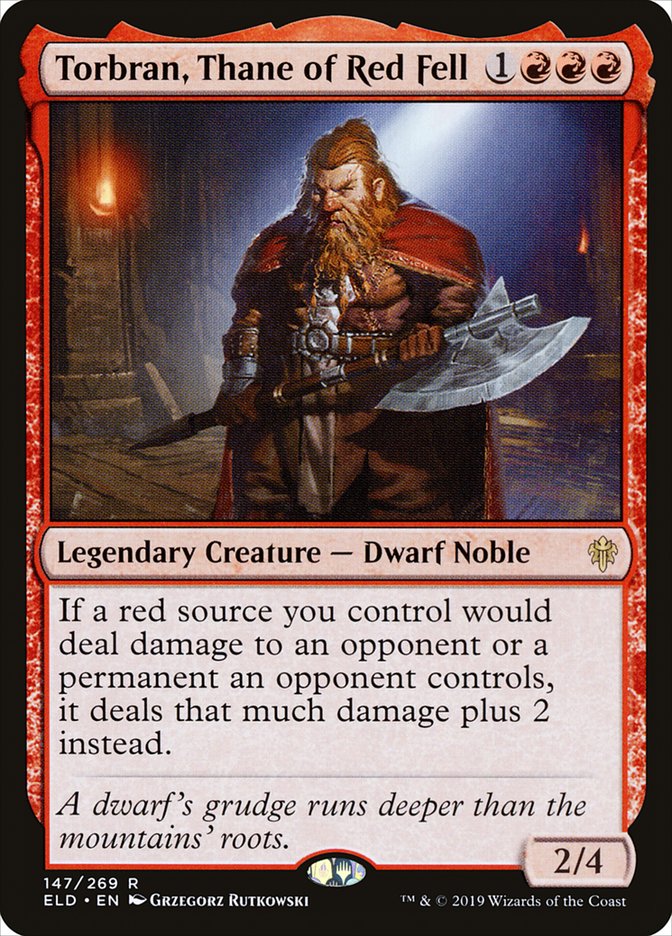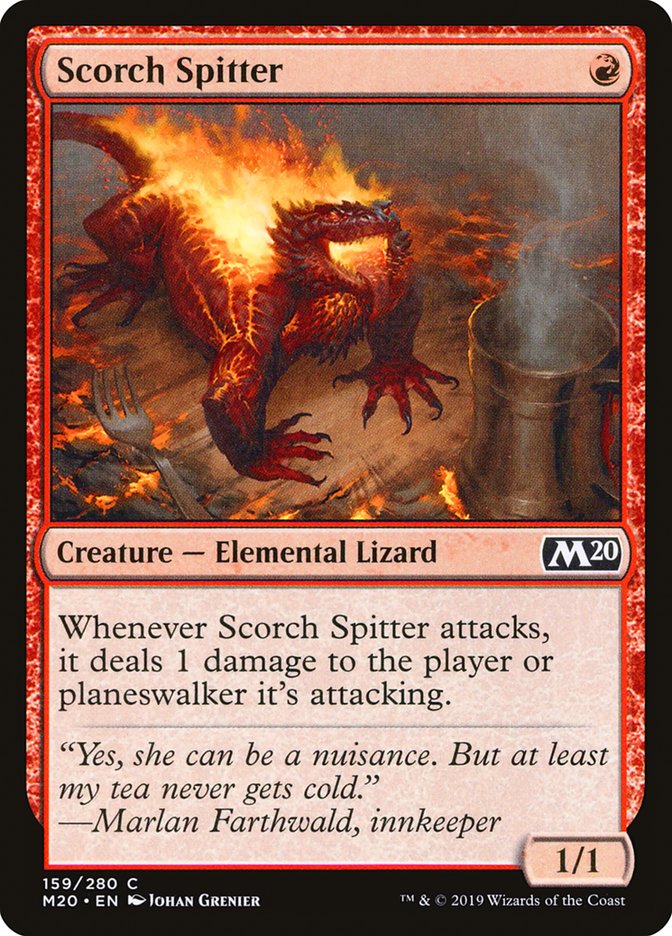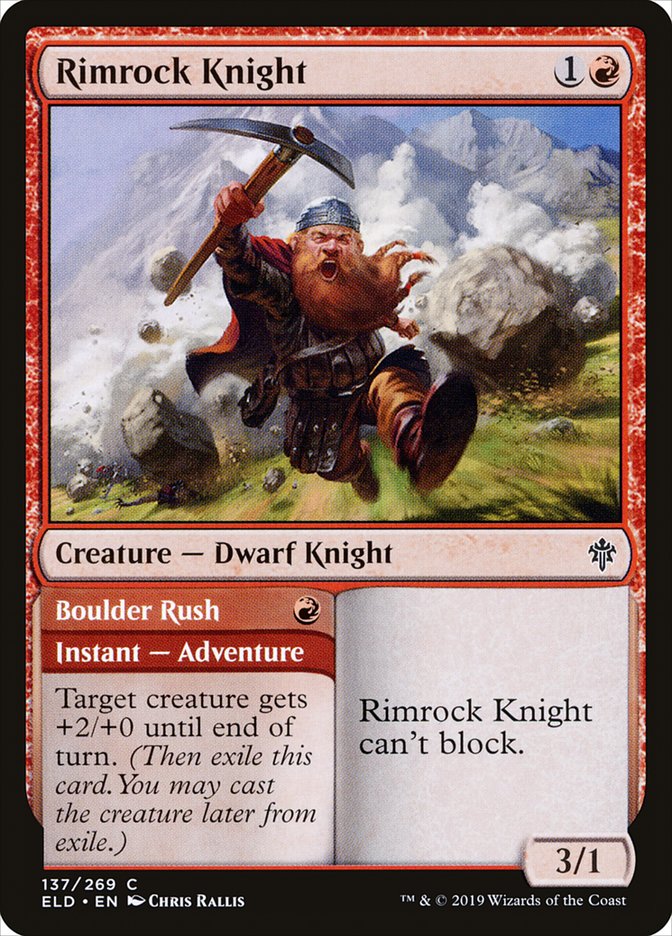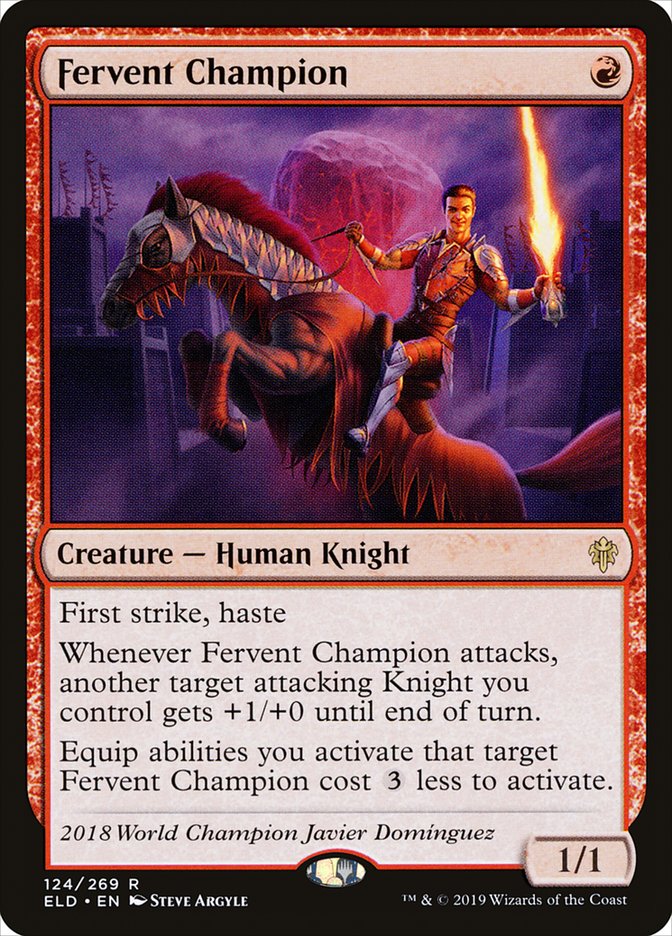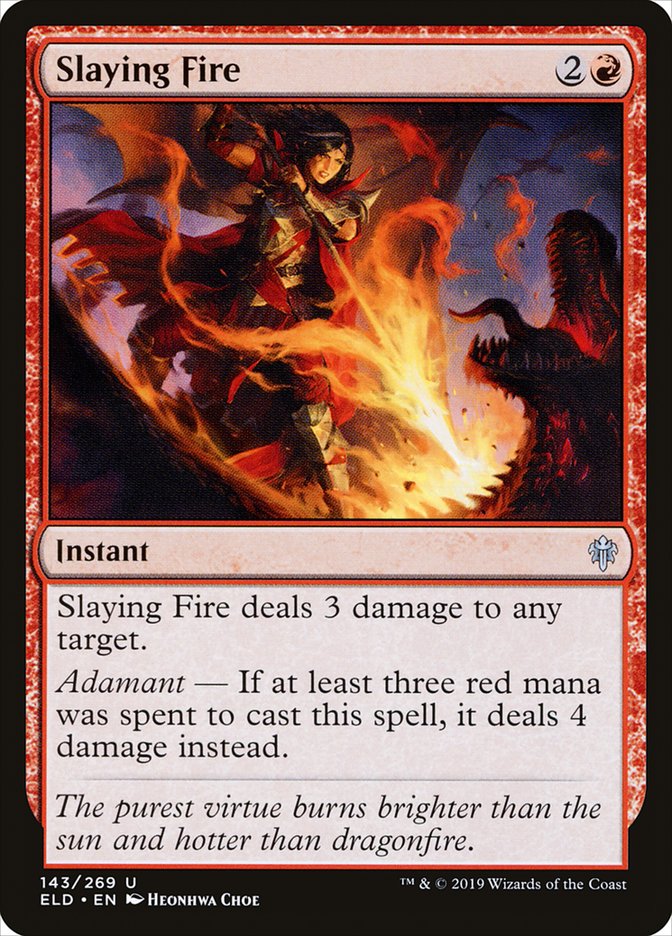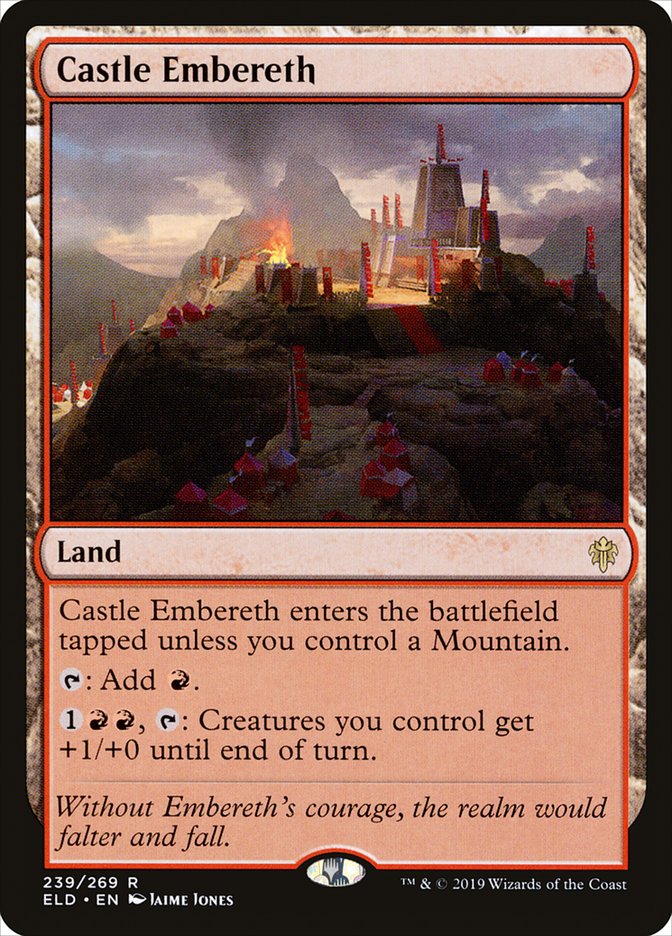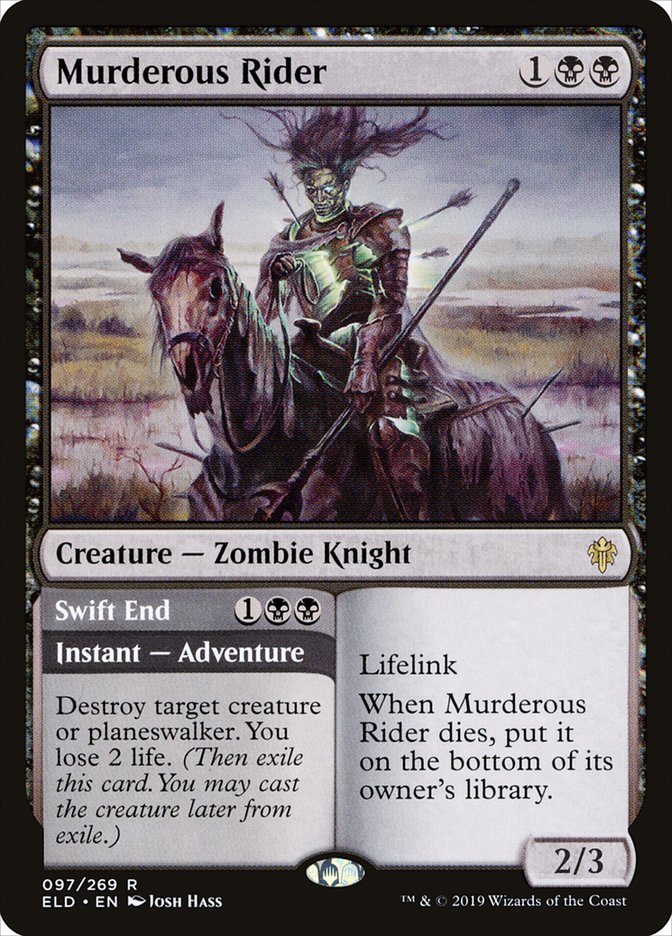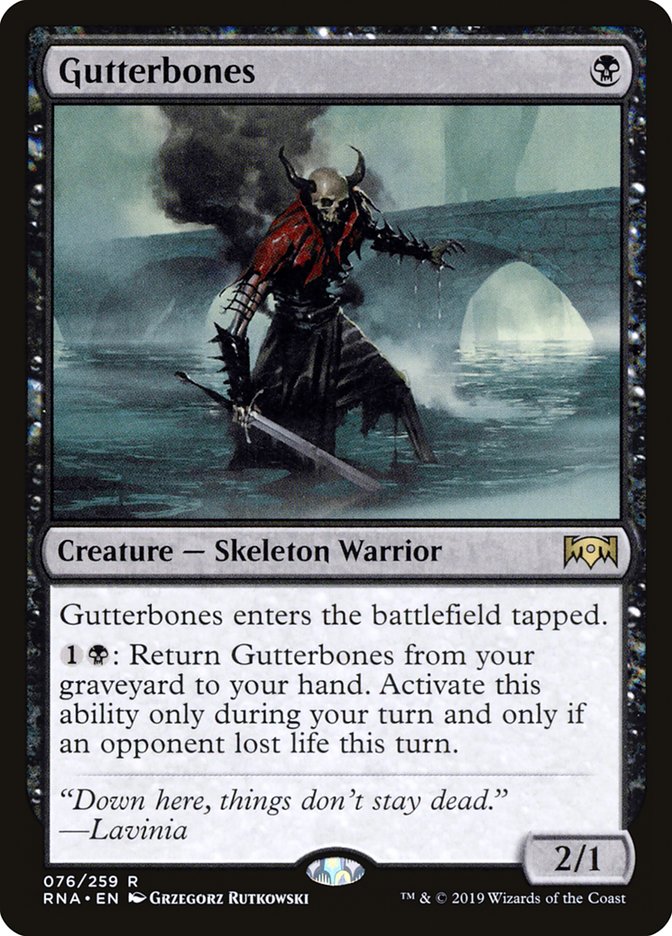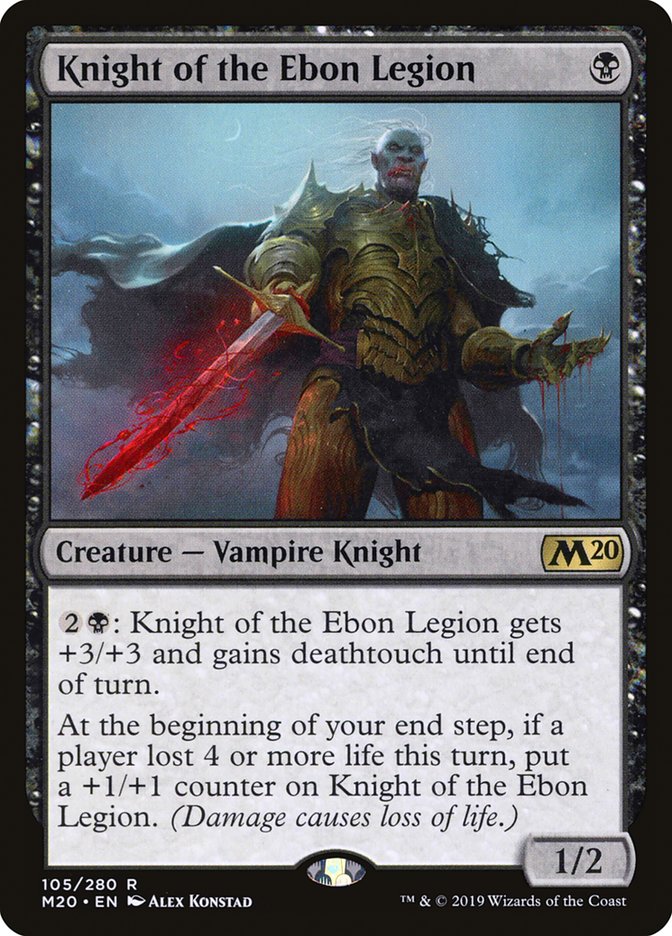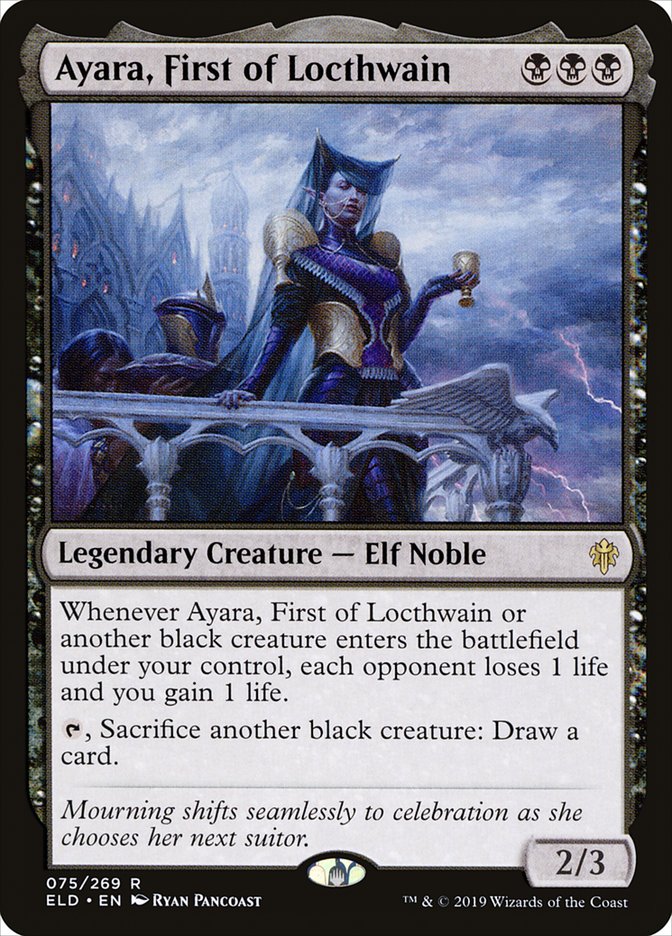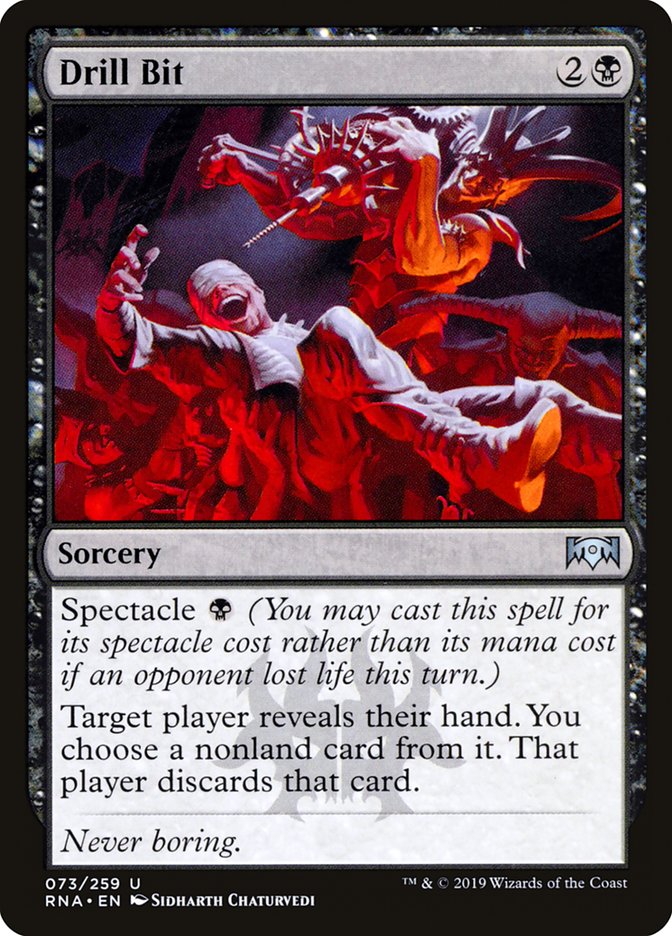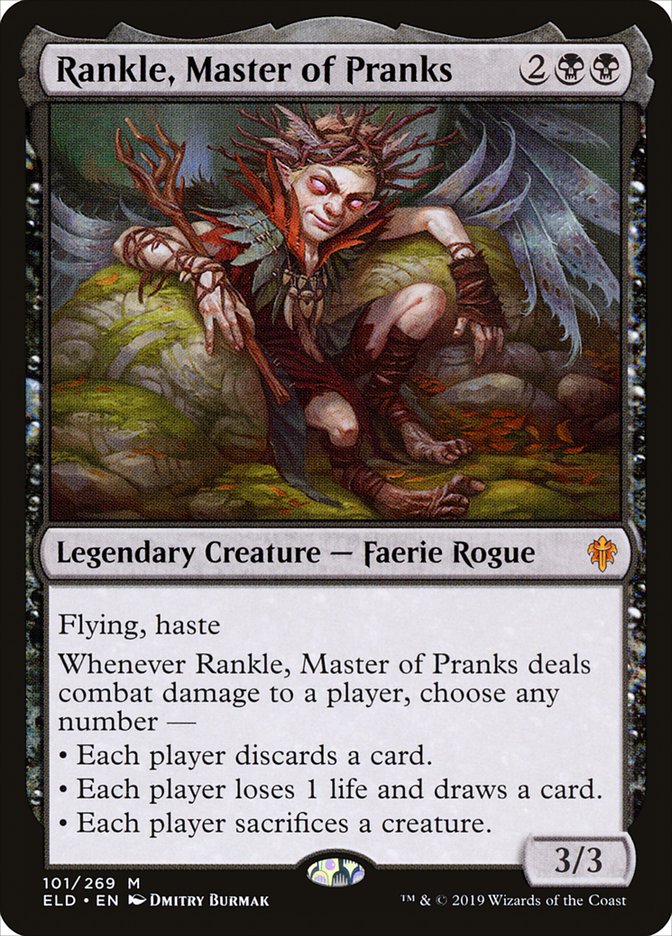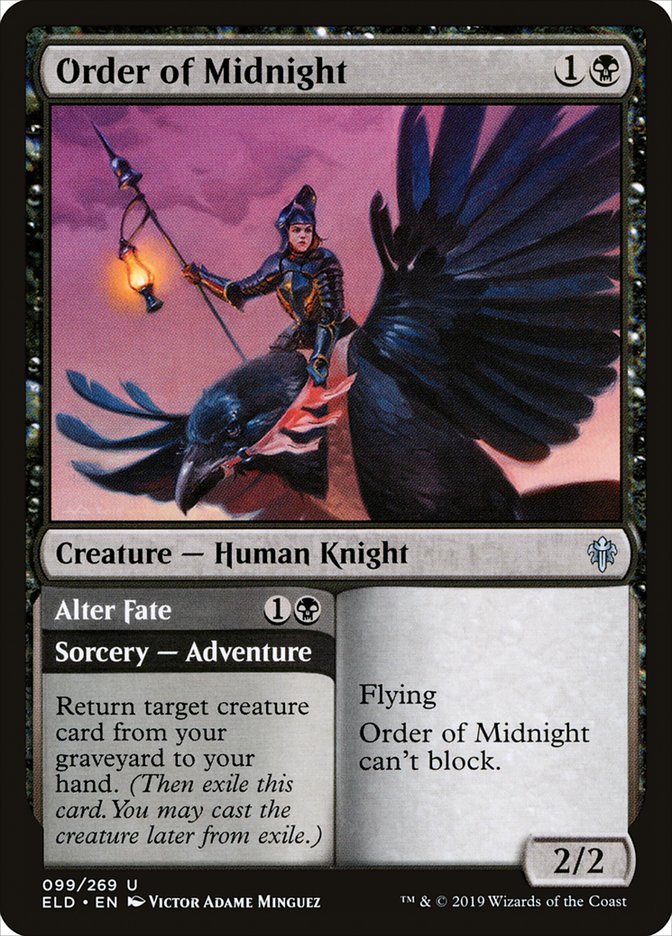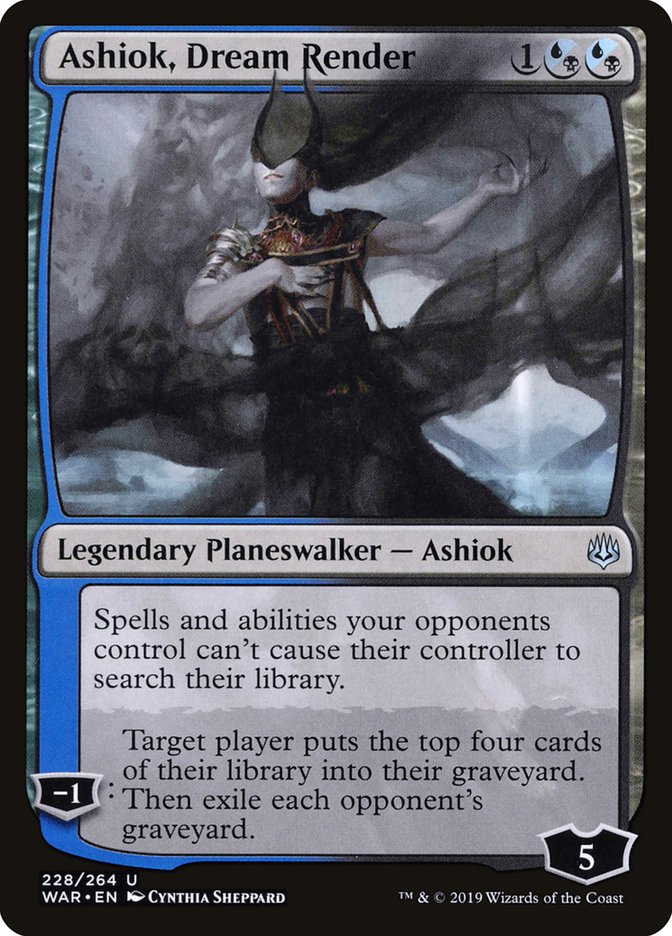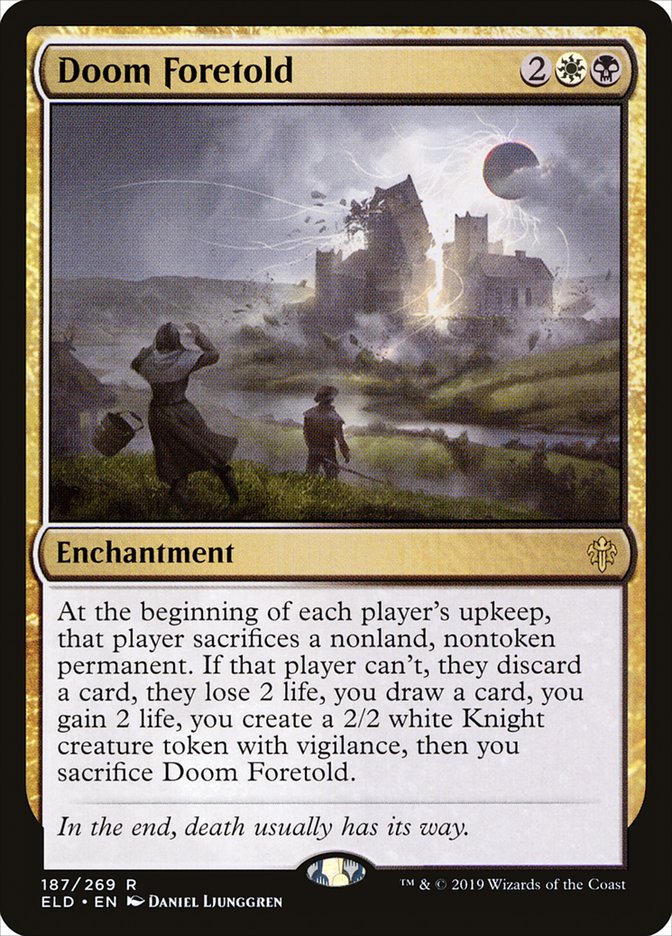One of the most hotly anticipated sets in recent memory made its debut this weekend at the SCG Philadelphia Team Open, with a Standard portion that sure starts the format off on a pretty insane foot…

…er, right.
Look, before jumping to any conclusions, let’s just take a breath and remember that nobody really had any idea how to build decks for this format for the most part. Part of why it looks so crazy is that few people were really prepared for what this format is about. It’s probably not going to look like this in two weeks.
What set off this chain reaction?
Well, for starters, it’s not any one thing.
Take Oko, Thief of Crowns, for instance. Quite a strong card. Has some spots where it’s absolutely absurd (like the third turn). However, its strength is not equal against all possible cards. It’s merely a pillar of the format that will help shape the rules of engagement for the months ahead.
What makes Oko so strong that two-thirds of Day 2 came packing him?
Well, it really is kind of a package deal. With such a massive loyalty to cost ratio on top of gaining two a turn, he’s really hard to kill. The amount of raw material he produces is incredible, and the extra life makes it hard for aggressive decks to finish you. His ability to turn things into 3/3s really leads to some pretty intense battlefields, despite not needing any mana to do so, while also keeping opponents from doing a lot of stuff that would otherwise be awesome. Finally, his ultimate is online most of the time, making it really hard to actually get ahead on the table once behind.
Oko isn’t the whole story, though. Not remotely. I mean, are we really imagining the format being in equilibrium with 70% ramp, 15% aggro, 15% midrange/tempo?
I mean, I don’t know, call me crazy, but maybe we just make our decks better against ramp?
Here’s a look at the SCG Philly metagame:
|
Archetype |
Day 2 Metagame |
Top 8 Metagame |
|
Bant Golos * |
50.0% |
92.3% |
|
17.9% |
0.0% |
|
|
Mono-Black Aggro |
10.7% |
0.0% |
|
Simic Midrange |
10.7% |
9.7% |
|
Bant Midrange |
7.1% |
0.0% |
|
Mono-Red Aggro |
3.6% |
0.0% |
* Bant Golos includes one Sultai Golos deck, which is mostly the same thing.
** Fires of Invention includes three Jeskai decks that are kind of planeswalker tapout decks, plus a few more Golos decks merging the archetypes.
So, what is at the heart of this Bant Golos deck the format seems to be completely warped around, at least Day 1 of our adventure?
Some of the most-pushed Adventures were basically at the top of the hype season leading up to Throne of Eldraine‘s release, and right out the gate, they have delivered. Three of the best all make appearances in Bant Golos.
Beanstalk Giant’s Fertile Footsteps is no surprise, given the relative shortage of options for ramp in the format. Fae of Wishes is crazy big for its cost while providing Game 1 flexibility. The real up-and-comer, however, is Realm-Cloaked Giant. It does a fine five-mana sweeper impression, even synergizing with Beanstalk Giant to keep a threat around, but that’s not even the full story.
Once Upon a Time is normally limited to creatures and lands, of course, but with Adventures, you can use the powerful library manipulation spell to dig deep to ramp, card draw, and sweepers, each bringing with it an additional threat for later, ensuring we’re usually not running out of gas.
Here’s an example of the strategy from this weekend:
Creatures (18)
- 4 Hydroid Krasis
- 2 Arboreal Grazer
- 4 Golos, Tireless Pilgrim
- 3 Beanstalk Giant
- 1 Kenrith, the Returned King
- 3 Realm-Cloaked Giant
- 1 Fae of Wishes
Planeswalkers (3)
Lands (28)
Spells (11)

One of the most impactful cards of Core Set 2020, Field of the Dead has definitely survived the rotation of Scapeshift, and in fact looks better than ever.
Field of the Dead was already starting to show up more and more without Scapeshift, and here we just see a further push into the ramp space, with Field of the Dead providing value and inevitability rather than a combo kill.
Fabled Passage is a crucial part of this new Field of the Dead deck, if only because of how high-quality of a fixer it is. That’s not the half of it, though. With Field of the Dead on the battlefield, it’s not hard to get Fabled Passage to make two 2/2s for us, rather than just the one that most of our lands do.
Golos was already an occasional part of these Bant ramp decks, thanks to it helping ramp us in the mid-game while leaving behind a must-kill threat, while also giving us an incredible late-game topdeck that can just completely take over a game. More interesting, perhaps, is the addition of the fifth Golos: Kenrith, the Returned King.
Kenrith is extremely flexible and ensures we need never waste mana again with careful planning. Reanimating Golos is just incredible when that option is available, but even if it’s not, he sure can gain life in a hurry. Drawing cards isn’t his strongest suit, but it’s a nice option to have, as it’s basically always productive. Finally, the green and red abilities make combat math a nightmare, should the game ever be at risk of that mattering.
While not new, I think it’s worth pointing out just how big of a player Agent of Treachery is likely to be, at least early in this format. It’s super-expensive, of course, but it’s also a really big and robust plan for going over the top of other ramp decks. Zach Allen, the lone Golos Ramp player to lean Sultai, even went so far as to incorporate multiple copies maindeck:
Creatures (17)
- 3 Hydroid Krasis
- 2 Arboreal Grazer
- 4 Risen Reef
- 4 Golos, Tireless Pilgrim
- 2 Yarok, the Desecrated
- 2 Agent of Treachery
Lands (29)
Spells (14)

While I like Find // Finality, I’m not sure I’d start the Okos in the sideboard. I’ve also never been the biggest Yarok, the Desecrated guy, but it’s probably fine, even if it’s mainly just copying Risen Reef and Golos.
Okay, I gotta admit, copying Agent of Treachery is pretty hot…
Casualties of War sure has been rising in stock. While getting to sideboard it in Sultai may be one of the selling points of the strategy, it’s certainly not one it has a monopoly on.
Fires of Invention raised a few eyebrows online when Throne of Eldraine first started being available on Arena. It’s looking more and more like the real deal, with multiple archetypes springing up around the card. The basic idea is that it’s “free” the turn you cast it, since you can cast another card that same turn. From that point forward, your mana is perfect, you save tons of mana from getting to cast two big cards, and you turn Fae of Wishes into an unreal engine, letting you cast absolutely nuts cards out of your sideboard regardless of color requirements, such as the aforementioned Casualties of War.
One style of Fires of Invention is the incorporation of it into a Golos Ramp deck:
Creatures (16)
- 3 Hydroid Krasis
- 4 Golos, Tireless Pilgrim
- 3 Beanstalk Giant
- 2 Kenrith, the Returned King
- 4 Fae of Wishes
Lands (28)
- 2 Forest
- 1 Plains
- 1 Swamp
- 1 Mountain
- 2 Island
- 1 Temple Garden
- 1 Steam Vents
- 1 Stomping Ground
- 2 Breeding Pool
- 1 Hallowed Fountain
- 1 Golgari Guildgate
- 1 Azorius Guildgate
- 1 Selesnya Guildgate
- 1 Simic Guildgate
- 1 Boros Guildgate
- 1 Temple of Mystery
- 1 Temple of Epiphany
- 1 Thornwood Falls
- 4 Field of the Dead
- 3 Fabled Passage
Spells (16)

One you’ve got a playset of Fae of Wishes and a playset of Fires of Invention, the door is really wide open for crazy niche cards that are absolutely incredible in the right spots but terrible in most.
Chance for Glory? Why not? I mean, if it’s not a spot where an extra turn wins the game, don’t get it.
Shared Summons for Fae of Wishes and anything else you want and now you’re really rolling.
You know, since mana is a joke and you can play whatever you want, why not pack all sorts of epic effects that you never have to draw?
The other style of Fires of Invention deck is Jeskai Superfriends, but with Fires of Invention and Fae of Wishes because they rule.
Creatures (4)
Planeswalkers (12)
- 4 Teferi, Time Raveler
- 4 Narset, Parter of Veils
- 2 Sarkhan the Masterless
- 1 Ugin, the Ineffable
- 1 Chandra, Awakened Inferno
Lands (27)
Spells (17)

Once we’re playing a tapout Superfriends deck rather than a ramp deck, it’s nice to see slightly fewer sideboard slots going to largely uncastable cards. It’s also nice to see sideboard cards that could reasonably be sideboarded in that also make for solid Fae of Wishes targets in some spots.
I guess if you want an answer to artifacts and enchantments, and mana is no object, True Love’s Kiss is a good way to do it.
You know, because it’s kind of nice to have super-cheap removal for red aggro, while it’s also nice to have answers to Torbran, Thane of Red Fell, whom we’ll be discussing later.
Okay, okay, what about the other Bant Ramp decks?
While Bant Ramp with Beanstalk Giant, Field of the Dead, and Golos was the more popular way to do it, we also saw some completely different Bant Ramp decks with basically just Oko and Hydroid Krasis in common.
Creatures (25)
- 4 Hydroid Krasis
- 4 Paradise Druid
- 3 Tolsimir, Friend to Wolves
- 4 Gilded Goose
- 2 Maraleaf Pixie
- 4 Questing Beast
- 4 Wicked Wolf
Planeswalkers (11)
Lands (24)

Okay, you don’t have to justify the Nissa package at this point, and splashing Teferi isn’t hard to imagine. The real question this deck raises: why not play Teferi in the other one?
Fine as a roleplayer anyway, but when combined with Gilded Goose and Oko, Wicked Wolf becomes a star.
Once we’re playing so many creatures worth killing, it’s kind of nice to lean all the way in.
Speaking of the Gilded Goose / Oko / Wicked Wolf / Questing Beast core, Matt Nass was the only player to Top 8 without Golos, Tireless Pilgrim, piloting a Simic deck built around that same core:
Creatures (24)
Planeswalkers (7)
Lands (25)
Spells (4)
Sideboard

The big difference here is replacing Tolsimir, Friend to Wolves and Teferi with Brazen Borrower and Once Upon a Time.
Brazen Borrower gives this strategy some much-needed interaction, despite the deck still functioning mostly like a ramp deck rather than anything tempo-focused like Simic Flash.
The adventures did not stop with the Bant-colored ones, however. While Mono-Red Aggro did not have a big week or anything, and actually dipped compared to its initial online presence, it did show up a little, and of course, Bonecrusher Giant was there.
Bonecrusher Giant as a three-drop would already be interesting, so the option to buy a cantrip Shock is just awesome.
As mentioned above, Torbran, Thane of Red Fell also played a key role in this reimagining of red aggro.
Torbran, Thane of Red Fell hits reasonably hard just straight-up, but the real benefit is how overwhelming of an effect he has on the game, giving your red creatures a virtual +2/+0 and your burn spells +2 damage. You even get extreme extra value out of triggers like that of Scorch Spitter.
Yeah, even the one damage from the trigger hits like a Mack truck when you’ve got Torbran on the battlefield. The original build of this deck actually leaned into Torbran even harder, with Cavalcade of Calamity for the wombo-combo action.
Cavalcade of Calamity is obviously unreal with Torbran, but so is everything, so it would appear we’re seeing a shift towards more independently good cards for when things aren’t necessarily going so well…
You know, like Rimrock Knight!
But seriously, Rimrock Knight is pretty sweet. It’s not like a 3/1 that can’t block is actually that far off for two mana, and the ability to pump something so cheaply really helps make it possible to punch through damage early. I mean, just think about how often you’d use a Shock to finish off a blocker. This does that while keeping the assault coming, with no loss of card economy.
Fervent Champion is mostly a glorified Raging Goblin, but first strike does work well with Boulder Rush. Besides, Rimrock Knight is obviously a Knight too, which means Fervent Champion can present a little extra damage sometimes. Regardless, just a 1/1 haste for one is pretty attractive when you’ve got Torbran and just want to drop it and get as much out of it as you can before your opponent untaps and kills it.
Creatures (22)
- 4 Runaway Steam-Kin
- 4 Scorch Spitter
- 4 Fervent Champion
- 4 Bonecrusher Giant
- 2 Torbran, Thane of Red Fell
- 4 Rimrock Knight
Lands (21)
Spells (17)

Rounding out Gabriele’s list, we find two immediate and automatic staples for Mono-Red:
Slaying Fire does an excellent Flame Javelin impression, and Castle Embereth has such a low opportunity cost.
Week 1 being completely defined by Adventures wouldn’t be complete without one I suspect will prove to be one of the best when all is said and done.
What does it take to play Murderous Rider? Swamps. It takes Swamps. That’s it. This card is absurd.
Creatures (30)
- 3 Midnight Reaper
- 4 Gutterbones
- 2 Footlight Fiend
- 3 Lazotep Reaver
- 4 Knight of the Ebon Legion
- 3 Rankle, Master of Pranks
- 4 Murderous Rider
- 3 Ayara, First of Locthwain
- 4 Blacklance Paragon
Lands (22)
Spells (4)
Sideboard

Having both Gutterbones and Knight of the Ebon Legion while white and red lost most of their best one-drops leaves black in the uncommon position of having the best beatdown off the starting block.
Knight of the Ebon Legion and Murderous Rider both being Knights doesn’t do a ton in Mono-Black, but it does make Blacklance Paragon a fair bit more fearsome.
A 3/1 flash creature for two is already interesting, and getting that lifelink / deathtouch combo on the way in lets us use it as a sort of Lightning Helix in some spots, while also having the ability to punch through blockers without wasting deck slots on removal. Notice how there are literally zero dedicated removal spells in the entire maindeck!
Ayara, First of Locthwain gives us reach, a mid-game engine to help refuel, and a powerful “must-kill” threat that really benefits from our use of Drill Bit.
This deck really straddles the line between fast black aggro and some sort of Aristocrats “sacrifice” deck, and nobody bridges the two quite like Rankle, Master of Pranks:
Rankle is a reasonably fast and aggressive threat with a lot of flexibility. It really plays well with the attrition parts of the deck, helping enable us to bypass dedicated spot removal altogether.
The one absence I really lament is that of Order of Midnight. I’ve got a feeling, when the dust settles, Order of Midnight is going to end up playing a role in these sorts of decks.
Ashiok is pretty brutal against these ramp decks. I wonder if there’s enough of a ramp presence yet to get folks maindecking Ashiok…?
With Week 1 completely dominated by Ramp, what comes next?
Well, funny you should ask…


